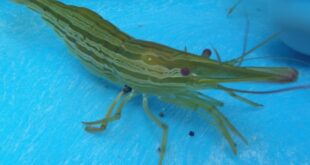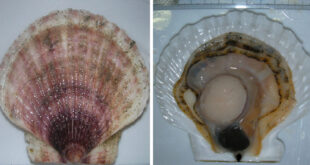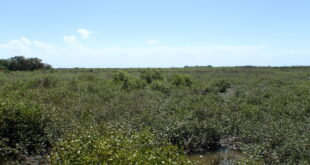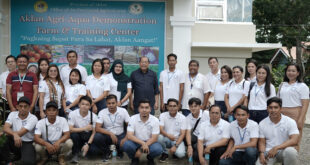Development Communication Section

AQD visiting scientist Dr. Satoshi Watanabe of JIRCAS (Japan International Research Center for Agricultural Sciences) presented a part of his study on IMTA (integrated multi-trophic aquaculture), titled the “Estimation of energy budget of sea cucumber, Holothuria scabra, in integrated multi-trophic aquaculture” on 11 March at AQD’s Tigbauan Main Station in Iloilo, Philippines.
IMTA is a polyculture technique that uses organisms from various trophic levels. It can help prevent environmental deterioration associated with eutrophication since excess feeds and wastes from one aquatic species (e.g. fish) serves as food or source of nutrient to another species (e.g. sea cucumber, seaweeds).
Based upon the results of Dr. Watanabe’s experiments and information from literatures, the nutrient budget of sea cucumber (the sandfish H. scabra) cultured with milkfish (Chanos chanos) and seaweeds (Kappaphycus alvarezii) was calculated as a function of age. For example, the nitrogen requirement of a one-year old sandfish is 23.1 mg/day (or 334 mg/day milkfish feed) assuming that ingestion is 100% and digestibility is 80%. The nitrogen excretion of one-year old H. scabra is estimated to sustain the growth of 46 g K. alvarezii.

 SEAFDEC/AQD Southeast Asian Fisheries Development Center | Aquaculture Department
SEAFDEC/AQD Southeast Asian Fisheries Development Center | Aquaculture Department



